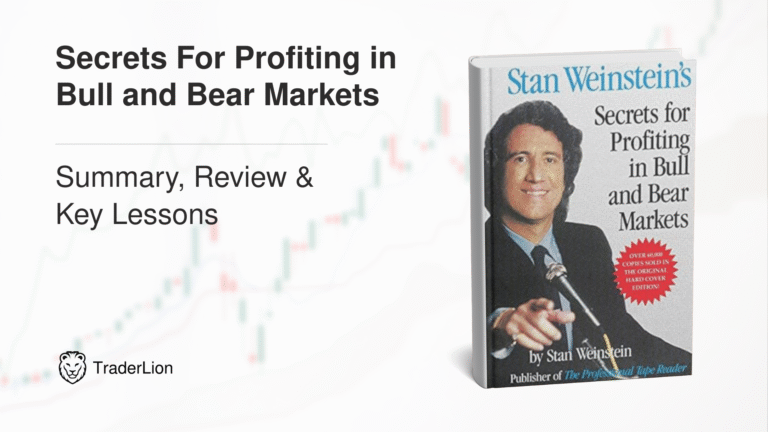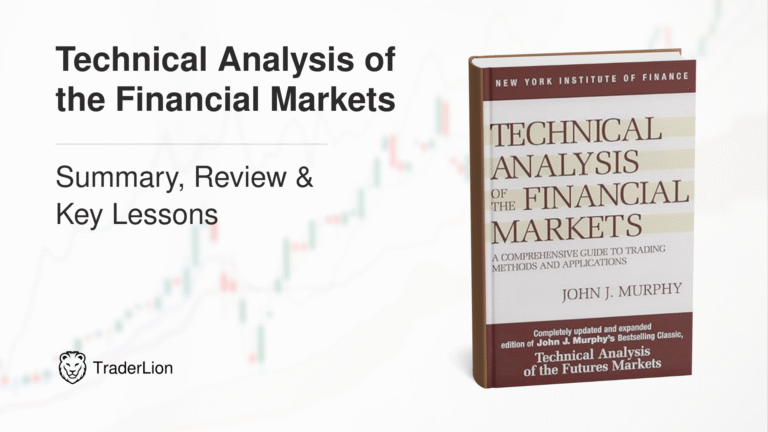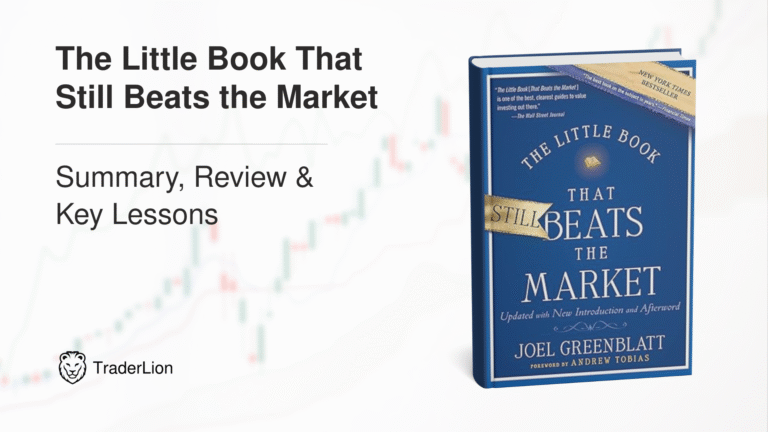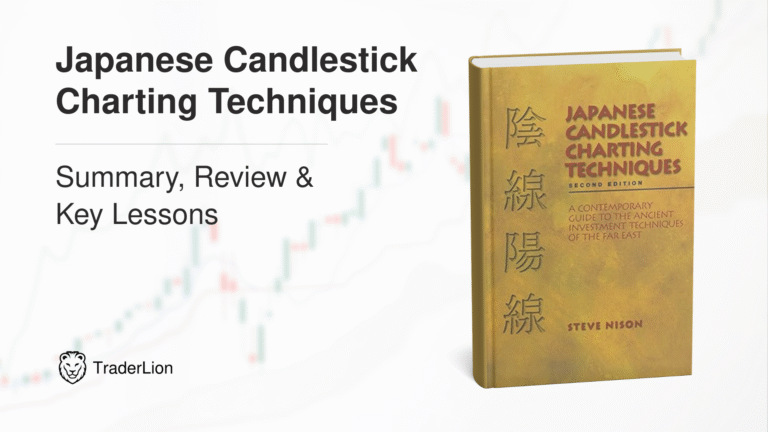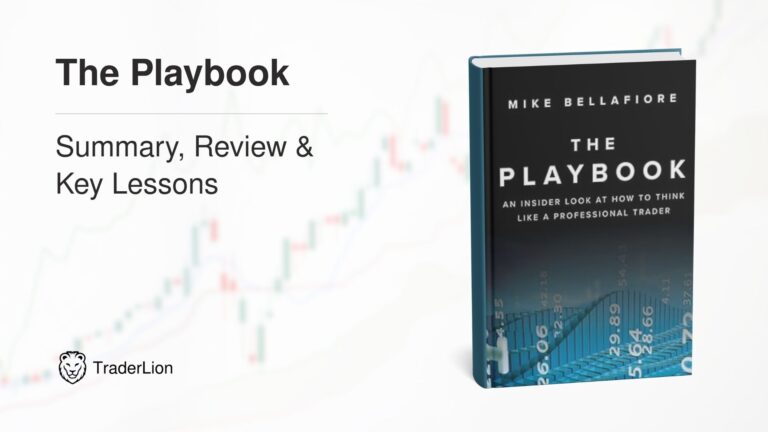
The PlayBook Summary, Review & Key Lessons for Traders
Published: July 23, 2025
Every trader has faced this: a few solid setups lead to confidence, then a cold streak leaves you second-guessing your edge. The cycle repeats. Without a systematic process to define and refine your best trades, performance suffers. That’s where The PlayBook steps in. Written by Mike Bellafiore of SMB Capital, this book lays out a trader development framework that solves a common pain point — not knowing exactly what works for you. It offers a structure for building a personalized playbook of high-conviction trades, based on real setups, risk profiles, and the market context that suits your style.
The PlayBook isn’t abstract theory or academic fluff. It’s loaded with concrete examples from real SMB traders. Bellafiore breaks down how developing, underperforming, and even experienced traders can elevate their game by documenting and internalizing their best trades. The goal? Get bigger in your strengths and eliminate the distractions. This book also unpacks the psychology of improvement — how pro traders think, adapt, and avoid randomness. Whether you’re trying to scale your size or just trying to survive the learning curve, this read is tactical and focused.
Quick Facts About The PlayBook
Who Is Mike Bellafiore and Why Listen?
Mike Bellafiore is the co-founder of SMB Capital, a proprietary trading desk based in New York City. He’s also behind SMBU, the firm’s trader education arm, and SMB Systems Trading. What gives Bellafiore credibility isn’t just the Wall Street address or media features on CNBC and Bloomberg — it’s the real track record of training traders from scratch. He’s built and led a desk where traders are expected to operate at a professional level under risk controls, performance metrics, and tight feedback loops. That’s real accountability.
His first book, One Good Trade, introduced core principles of discipline and consistency. The PlayBook goes further — offering traders a path to evolve by institutionalizing their best trades. Bellafiore doesn’t just coach; he trades, observes trades daily, and holds others accountable to P&L performance. This is not a theory-first author. His writing is informed by thousands of hours of live mentoring, post-trade reviews, and desk-level execution. For traders looking to learn from someone in the trenches, Bellafiore brings relevant, practitioner-level insight.
Never miss a post.
Sign up to get instant notifications when we publish a new post.
What is The PlayBook About?
The PlayBook shows how to build a personalized catalog of high-quality trade setups that align with your edge. It stresses the importance of documenting trade logic, risk structure, and execution detail so you can replicate and scale the trades that work.
The book mixes trader stories with detailed trade reviews. Bellafiore uses characters like “Shark,” “Prep,” and “GMan” to unpack lessons through their wins and losses. The idea is to teach process thinking over gut trading.
It’s not just about setups. Bellafiore covers psychology, journaling, coaching, and the structural habits of consistent pros. You also get guidance on how to self-assess and remove poor trades from your playbook.
The PlayBook Chapters at a Glance
Why The PlayBook is a Must-Read
Every trader hits a plateau. The PlayBook breaks through that by asking one fundamental question: what trades work best for you — and how can you do more of them, bigger and better? That’s the core utility here. Bellafiore doesn’t suggest a holy grail strategy. Instead, he provides a system for tracking and improving your own edge — one trade at a time. That’s durable and scalable.
The book is also a wake-up call. It demolishes the myth that watching charts all day or copying other traders will make you successful. It shows the importance of having structure, discipline, and a personalized process for trade selection. The combination of real trader stories and in-depth setup reviews makes the insights tangible. It’s not abstract — you’re in the trenches.
Beyond tactics, the book drives home trader psychology. You’ll see the importance of mental conditioning, feedback loops, and honest review. You’ll also learn how pros prepare — not just for trades, but for tough environments and personal crises. Bellafiore opens up about his own challenges, and the honesty makes the book more impactful.
Top Lessons to Apply to Your Trading
1. Build Your PlayBook One Setup at a Time
The book’s main framework is creating a personalized set of A+ trades. Each setup should include a full breakdown: market context, entry signals, risk levels, and exit criteria. You’re not just journaling — you’re codifying edge. Over time, this process helps you trade with more conviction, avoid random trades, and scale size when the stars align. Traders who do this consistently separate themselves from the P&L drift crowd.
2. Grade Trades by Risk/Reward, Not Outcome
Bellafiore makes it clear: a good trade is one that follows process, not necessarily one that makes money. Evaluating trades based on execution and edge — not P&L — keeps you from reinforcing bad habits. Over hundreds of trades, process discipline yields better results than short-term luck. A good setup that doesn’t work is a learning opportunity; a bad setup that works is a trap. This aligns well with strategies focused on risk/reward frameworks and decision-making under pressure.
3. Use Reasons2Sell and Trade Management Rules
Many traders focus obsessively on entries. This book argues exits matter just as much. “Reasons2Sell” include things like hitting a target, price stalling, reversal candles, tape shifting, or news changing. Having this checklist ensures you exit when risk/reward decays, not when emotions spike. Combined with position scaling rules, it leads to cleaner, more consistent P&L.
4. Get Bigger in Your Best Trades (Responsibly)
One of the most valuable mental shifts from this book: it’s not about trading more, it’s about getting bigger in your best ideas. Bellafiore emphasizes identifying your highest-conviction setups and being willing to size up — with proper planning. Many traders stay small and underperform because of fear. This book teaches you how to recognize when to press, how to structure risk, and how to review size decisions post-trade.
Common Mistakes The PlayBook Helps You Avoid
1. Trading Without a Process
Bellafiore pulls no punches: if you’re trading based on vibes, intuition, or someone else’s ideas, you’re not a professional. The PlayBook helps you build a structure around real setups that you’ve validated. That makes decision-making faster, exits cleaner, and reviews meaningful. It moves you from reactive to intentional trading.
2. Being Random with Size
Many traders increase size based on confidence, not data. This leads to oversized losses or missed opportunity. The PlayBook encourages documenting trades by category — A+, A, B — and building data around them. Once you know which setups work, you can confidently scale them. This avoids the trap of being large on losers and small on winners.
3. Failing to Learn from Good Losing Trades
One of the most overlooked mistakes is writing off good process trades just because they didn’t work. Bellafiore teaches traders to dissect each trade: did you plan it correctly, follow your entry rules, manage risk, and exit with reason? If yes — log it, repeat it. This mindset builds resilience and removes the emotional swing from losses. You stop fearing red days and start trusting your system.
Best Quotes from The PlayBook
“You are going to make a substantial recovery.”
In context, Bellafiore said this to his stroke-stricken father — but it’s also a metaphor for the trader’s journey. Every trader gets knocked down. What matters is the structure and mindset for recovery. Progress is possible, but only through repetition, patience, and focused work.
“The best traders know when they are right and get bigger.”
This line captures the essence of scaling. It’s not just about identifying a good trade — it’s about recognizing it in real time, having the plan ready, and pressing with size when everything lines up. Most retail traders never learn this. The PlayBook makes it a core priority.
“Do what you do best and stop trying to make tacos.”
Bellafiore uses this restaurant analogy to drive home a critical point: stick to your edge. Don’t chase every market. Don’t try to trade like everyone else. Document what works for you and do more of it. The PlayBook is how you find your pizza recipe.
Who Should Read The PlayBook
This book is designed for traders who are beyond the basics and now face the challenge of consistency and growth. If you’ve ever looked back on a solid trade and thought, “Why didn’t I size up more?” or “Why can’t I replicate this?” — this book is for you. It’s especially valuable for prop traders, active intraday participants, or swing traders who need a repeatable framework to catalog their edge.
But it’s not for passive investors or casual traders. This is a book about performance. Bellafiore assumes the reader is actively managing trades and already familiar with technicals, tape reading, and risk-reward math. If you’re not ready to track trades daily, analyze setups, or accept hard coaching — skip it. For traders ready to evolve from “good idea” to “pro execution,” this book delivers.
Final Thoughts on The PlayBook
Every trader eventually reaches a crossroad: stay average and rely on instincts, or get systematic and build a process. The PlayBook is the tactical guide for the second path. It gives you tools to define your edge, evaluate your trades, and scale what works. More importantly, it builds the muscle memory to trade like a professional — with precision, not emotion.
If you’ve struggled with size, drifted from your plan, or failed to learn from your best trades, this book hits home. It’s not always an easy read — there’s no sugarcoating. But the clarity, examples, and execution-focused structure make it one of the most useful books a developing trader can study.
TraderLion’s verdict: a core text for any trader serious about long-term improvement. Required reading if you want to trade like it’s your career — not your hobby.






